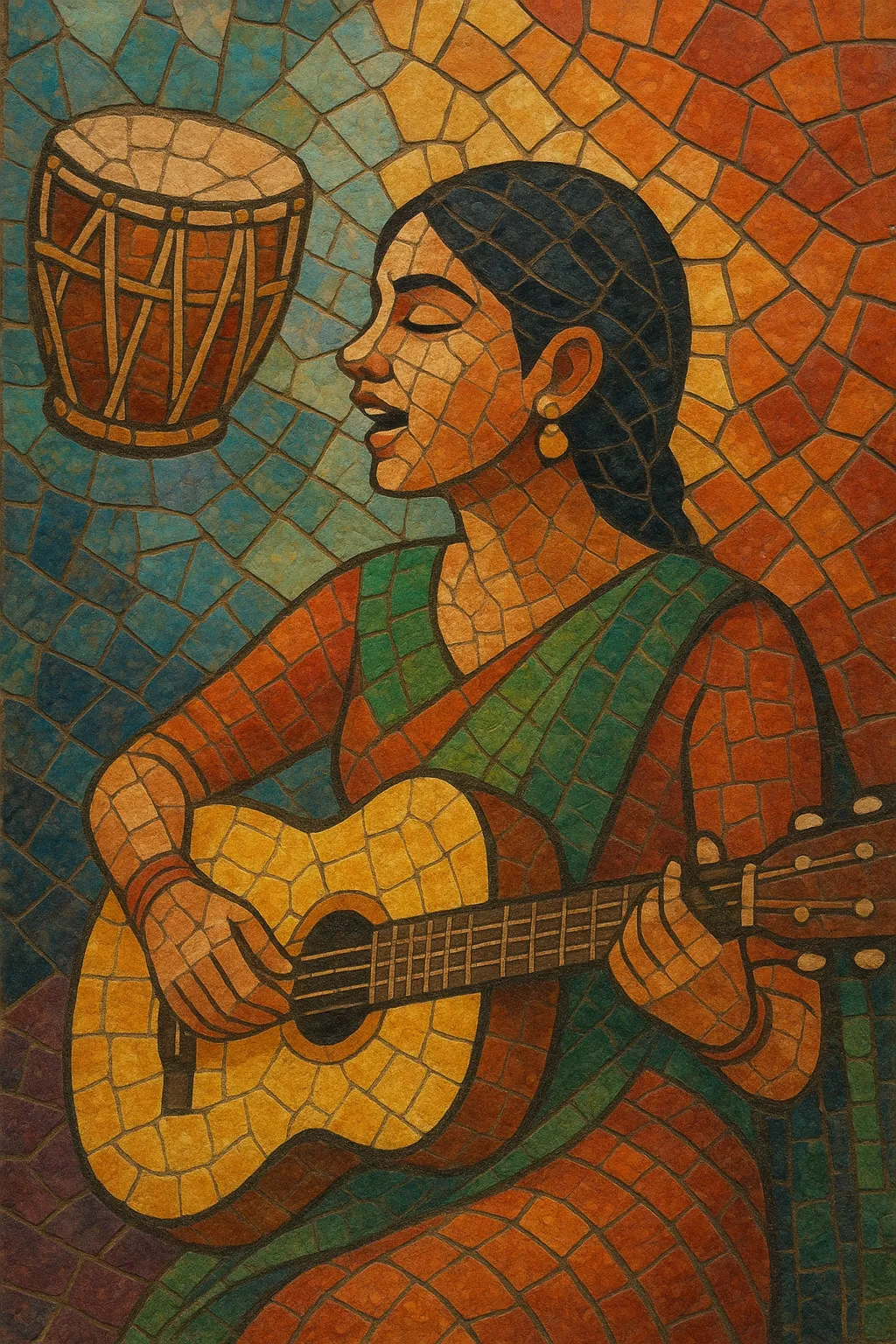Marathi pop is contemporary popular music performed in the Marathi language, emerging as a non-film counterpart to Marathi cinema songs and older non-film bhavgeet traditions. It pairs Indian pop and Bollywood-style production with regional melodic sensibilities and rhythms from Maharashtra.
Typical tracks use verse–pre-chorus–chorus structures, catchy hooks, and polished vocals with light ornamentation drawn from Hindustani classical practice. Production ranges from acoustic band settings to synth-driven, dance-oriented arrangements, often featuring dholki-inspired grooves, electric bass, guitars, keyboards, and programmed drums. Lyrically, Marathi pop explores romance, friendship, youth culture, everyday life, and regional pride, and it is distributed through private albums, television music programs, and—especially in the 2010s and 2020s—streaming platforms and short-video apps.
Marathi-language non-film music has deep roots in bhavgeet and concert traditions, with singers and composers cultivating expressive, poetry-led songs outside the cinema. As satellite TV, private labels, and Indipop expanded across India in the 1990s, a regional Marathi pop space began to take shape alongside Hindi Indipop, adopting modern studio production and youth-focused songwriting while retaining Marathi linguistic and cultural identity.
The early 2000s saw marquee Marathi pop albums and singles reach mass audiences via music channels and CD/VCD releases. Producer–performers and dynamic vocalists helped codify the sound—hook-forward, radio-ready songs that blended Hindustani-inflected melodies with dance-pop and Bollywood-style arrangements. This period established Marathi pop as a parallel track to film music rather than only a feeder to cinema.
With the rise of YouTube, streaming services, and social media, Marathi pop diversified. Independent singer–songwriters, reality TV discoveries, and film composers releasing non-film singles broadened the scene. High-quality music videos and viral hooks became key to discovery, while TV talent shows and regional award circuits sustained a pipeline of new vocalists.
Short-video platforms and playlists now drive much of the genre’s audience growth. Production has become more hybrid—combining EDM-pop, acoustic balladry, and retro synth textures—while retaining Marathi-language hooks and culturally grounded themes. Regional festivals, college circuits, and digital collaborations continue to nurture new artists and sub-scenes.


